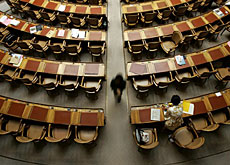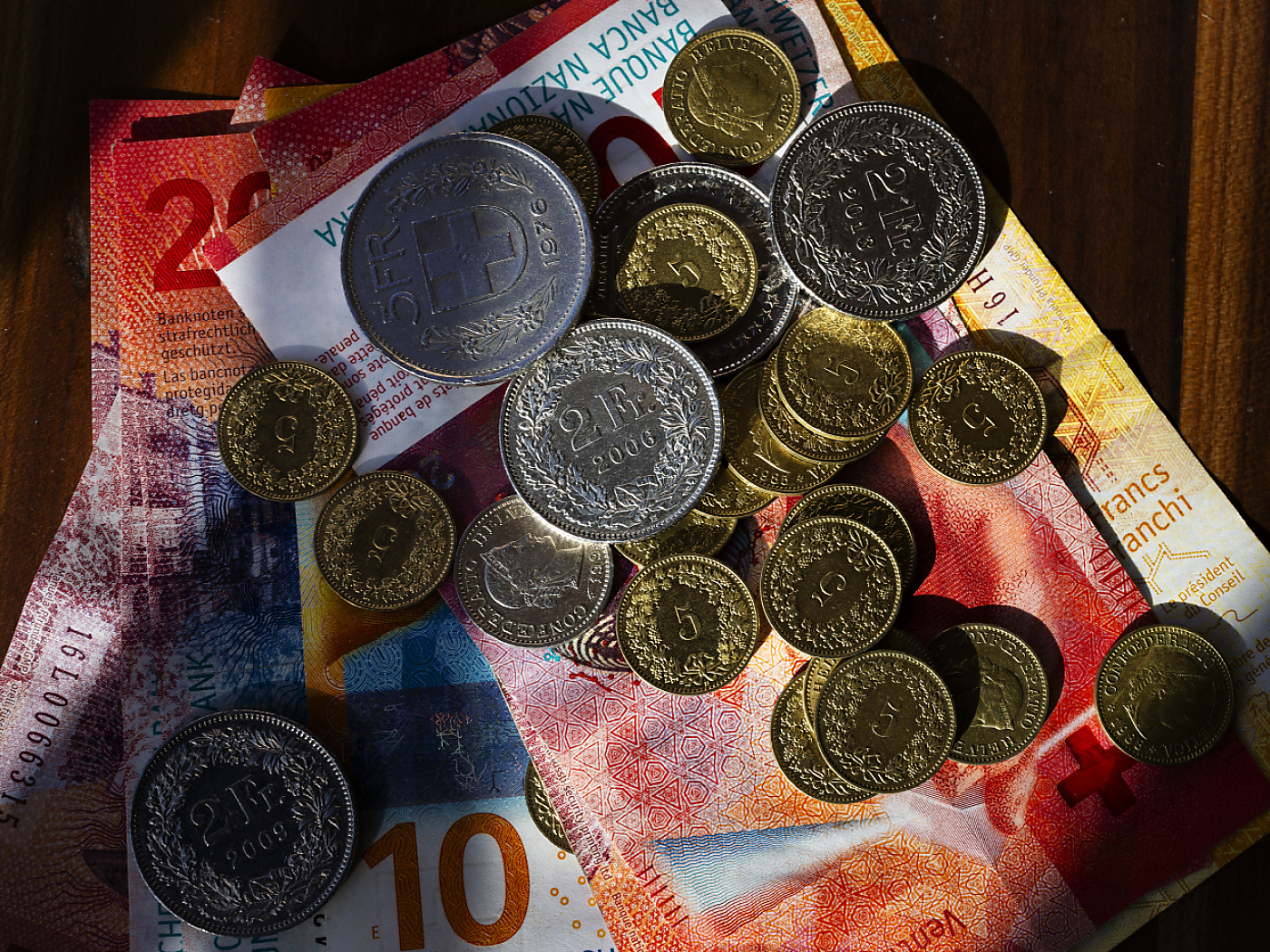Elections pit right against centre-left

The main political parties are gearing up for October's nationwide parliamentary elections, with the right and centre-left set for an intense battle for votes.
The centre-left Social Democrats and the rightwing Swiss People’s Party are vying to emerge as the largest of the four main parties in parliament.
Launching the campaign for the Social Democrats on Monday, President Hans-Jürg Fehr said their aim was to overtake the People’s Party in parliament and challenge the current make-up of the four-party government.
The announcement came just days after the rival People’s Party threw down the gauntlet. It announced plans to increase its share of the vote to 30 per cent – up three per cent – and counter what it considers “destructive policies” by the centre-left.
The latest statements appear to confirm what experts claim is further polarisation between the right and the centre-left, including the Green Party.
“The People’s Party and the Greens are the only groups which have made gains in cantonal elections since 2003. This trend is likely to be confirmed in October’s elections,” says political scientist Pascal Sciarini.
However, a survey by the gfs Bern polling institute expects no major shift, unlike the previous elections in 2003 when the People’s Party won an additional four per cent of votes. This gave them a second seat in the cabinet at the expense of the centre-right Christian Democrats.
Researchers nonetheless forecast a further slump for the Radicals, the other centre-right party, as well as growing support for the Greens. But this is unlikely to herald a redistribution of cabinet seats.
Blocher
The People’s Party is campaigning on a ticket of patriotism and national independence. Tax breaks, abuse of invalidity benefits, and asylum regulations are also high on the agenda.
It can count on its figurehead leader, Justice Minister Christoph Blocher, who remains Switzerland’s most divisive politician.
“Blocher might become an important topic of the elections,” says Sciarini. He adds that immigration and European integration could also prove happy hunting grounds for the People’s Party.
For its part, the centre-left is putting the emphasis on social security and the environment. They hope to attract voters by opposing tax breaks for the wealthy and by introducing a flexible retirement age, as well as cheaper health insurance and more funds for development aid.
Social Democrat campaign manager Nicolas Galladé told swissinfo the party would concentrate on its own policies rather than become fixated with Blocher’s hardline agenda.
The Green Party hopes to focus on climate protection, sustainable economic development, equal opportunities for women and men, as well as peace promotion. It has no plans to join the debate, fuelled by the right, on immigration issues.
Centre-right
The two centre-right parties are seeking to consolidate their positions and stop the rot of recent years.
The Christian Democrats have a number of new faces in top positions and hope to benefit from the popularity of the new economics minister, Doris Leuthard.
“It is crucial for the Christian Democrats to rid itself of the traditional image of a Catholic party, without scaring away its core supporters,” Andreas Ladner of the Graduate School of Public Administration is quoted as saying.
Job security, education, the reform of the welfare system and the family – a cornerstone of party policy – feature prominently in its campaign.
The Radicals, with their close links to the business community, portray themselves as a party promoting social and economic progress.
“We are somewhere in the middle between the right and the left, but we consider ourselves to be frontrunners when it comes to innovation,” says party spokesman Christian Weber.
However, the party’s backing in November for a new nuclear power plant caused a public outcry. Its election platform focuses on education, economic growth, integration of foreigners and Switzerland’s role in the world.
swissinfo, Andrea Tognina and Urs Geiser
Elections to the 200-member House of Representatives and for 43 of the 46 seats in the Senate are scheduled for October 21.
The new parliament will elect the seven-member cabinet in December.
The four main political parties currently account for 222 of the 246 seats in both parliamentary chambers.
Swiss People’s Party (rightwing, 64 seats): an additional 100,000 votes.
Social Democratic Party (centre-left, 61 seats): to become the biggest party in parliament at the expense of the People’s Party.
Radical Party (centre-right, 54 seats): an additional six seats, in alliance with the Liberal Party.
Christian Democratic Party (centre-right, 43 seats): to remain the largest group in the Senate and win extra seats in the House of Representatives.
Green Party (14 seats): to win more seats in the House and make it into the Senate for the first time.

In compliance with the JTI standards
More: SWI swissinfo.ch certified by the Journalism Trust Initiative










You can find an overview of ongoing debates with our journalists here . Please join us!
If you want to start a conversation about a topic raised in this article or want to report factual errors, email us at english@swissinfo.ch.